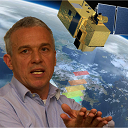Opportunities and Challenges for Medium Resolution (hecta- to kilometric) Earth Observation of Land Surfaces in the Advent of European Proba-V and Sentinel-3 Missions
A special issue of Remote Sensing (ISSN 2072-4292).
Deadline for manuscript submissions: closed (31 August 2016) | Viewed by 79930
Special Issue Editors
Interests: remote sensing of vegetation with focus on time series analysis and use of physically based radiative transfer models for mapping biochemical and biophysical traits
Special Issues, Collections and Topics in MDPI journals
Special Issue Information
Dear Colleagues,
The Earth's surface is changing at a high pace, but with varying intensities across the globe. Changing land use and land cover lead to a loss in biodiversity, reduce the available land for agricultural production, and impact many ecosystem functions, processes, and services. For monitoring these changes, satellite-based Earth Observation is a key technology. Only remote sensing permits one to monitor large areas at a sufficiently high spatial resolution, with a high revisit frequency, at reasonable costs.
The time series of globally available AVHRR, SPOT-VGT, MERIS and MODIS data sets at hecta- to kilometric spatial resolutions now cover more than 30 years of data. The data provide excellent insights regarding past and ongoing changes of the land surface. To further strengthen the usefulness of these medium resolution time series, Europe is contributing two new satellite missions that will increase data availability and ensure data continuity: Proba-V and Sentinel-3.
Proba-V was launched in 2013 and delivers spectral data from visible to SWIR bands at spatial resolutions between 100 m and 1 km, with very high revisit frequency (1-5 days depending on resolution and latitude). Sentinel-3 will be launched later this year (2015) and will host an innovative instrument package delivering data by various (passive and active) instruments. The OLCI instrument on Sentinel-3 will provide, for example, data from 21 spectral bands at a 300 m grounds sampling distance. Both missions ensure very short revisit times, so as to enable detection of rapidly occurring changes in the land surface, and were built to replace SPOT-VGT, which came to the end of its lifetime in 2014.
As both satellite missions are not yet well known by our community, we wish to compile knowledge about the two satellite missions, as well as example applications, with a focus on land surfaces. We therefore invite you to submit manuscripts about your recent research, as well as review papers, with respect to the following topics (not limited):
- Mission statuses for Proba-V and Sentinel-3
- Data processing & European core services
- European developments for (big) data handling and processing
- Research projects (national, European, and international)
- International collaborations and (larger) programs
- Cal/Val & Intercalibration activities
- Applications focusing on land (plus a few examples concerning the ocean, inland water, the cryosphere, and the atmosphere)
- Comparative studies examining different satellite systems
- Synergies between various satellite systems
Clement Atzberger
Magda Chelfaoui
Guest Editors
Manuscript Submission Information
Manuscripts should be submitted online at www.mdpi.com by registering and logging in to this website. Once you are registered, click here to go to the submission form. Manuscripts can be submitted until the deadline. All submissions that pass pre-check are peer-reviewed. Accepted papers will be published continuously in the journal (as soon as accepted) and will be listed together on the special issue website. Research articles, review articles as well as short communications are invited. For planned papers, a title and short abstract (about 100 words) can be sent to the Editorial Office for announcement on this website.
Submitted manuscripts should not have been published previously, nor be under consideration for publication elsewhere (except conference proceedings papers). All manuscripts are thoroughly refereed through a single-blind peer-review process. A guide for authors and other relevant information for submission of manuscripts is available on the Instructions for Authors page. Remote Sensing is an international peer-reviewed open access semimonthly journal published by MDPI.
Please visit the Instructions for Authors page before submitting a manuscript. The Article Processing Charge (APC) for publication in this open access journal is 2700 CHF (Swiss Francs). Submitted papers should be well formatted and use good English. Authors may use MDPI's English editing service prior to publication or during author revisions.






